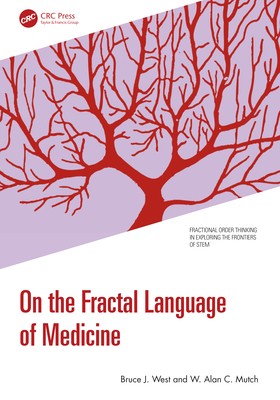
- We will send in 10–14 business days.
- Author: Bruce J West
- Publisher: CRC Press
- ISBN-10: 103279965X
- ISBN-13: 9781032799650
- Format: 17.8 x 25.4 x 1.1 cm, hardcover
- Language: English
- SAVE -10% with code: EXTRA
Reviews
Description
On the Fractal Language of Medicine bridges a very clear gap between the knowledge gained over the last 20 years in the physical and life sciences about network theory, organ synchronicity and communication, the understanding of fractal signatures in health and disease, and the importance of fractional calculus in integrating these concepts.
The authors opined that the field of medicine has not appreciated this hard-won knowledge and has suffered greatly as a result. This book addresses this perceived deficiency by introducing medical researchers, clinicians, residents, first-year medical students, and members of allied fields to the work of the so-called hard sciences. It seeks to facilitate effective communication between empiricists and theorists by making interdisciplinary efforts to explain complex mathematical concepts to physicians and, equally important, to elucidate complex medical concepts to physicists or mathematicians.
This book will be of great interest to medical students, professionals and academics, as well as students and researchers of applied mathematics, especially those interested in fractional calculus and fractals.
EXTRA 10 % discount with code: EXTRA
The promotion ends in 18d.04:22:02
The discount code is valid when purchasing from 10 €. Discounts do not stack.
- Author: Bruce J West
- Publisher: CRC Press
- ISBN-10: 103279965X
- ISBN-13: 9781032799650
- Format: 17.8 x 25.4 x 1.1 cm, hardcover
- Language: English English
On the Fractal Language of Medicine bridges a very clear gap between the knowledge gained over the last 20 years in the physical and life sciences about network theory, organ synchronicity and communication, the understanding of fractal signatures in health and disease, and the importance of fractional calculus in integrating these concepts.
The authors opined that the field of medicine has not appreciated this hard-won knowledge and has suffered greatly as a result. This book addresses this perceived deficiency by introducing medical researchers, clinicians, residents, first-year medical students, and members of allied fields to the work of the so-called hard sciences. It seeks to facilitate effective communication between empiricists and theorists by making interdisciplinary efforts to explain complex mathematical concepts to physicians and, equally important, to elucidate complex medical concepts to physicists or mathematicians.
This book will be of great interest to medical students, professionals and academics, as well as students and researchers of applied mathematics, especially those interested in fractional calculus and fractals.


Reviews